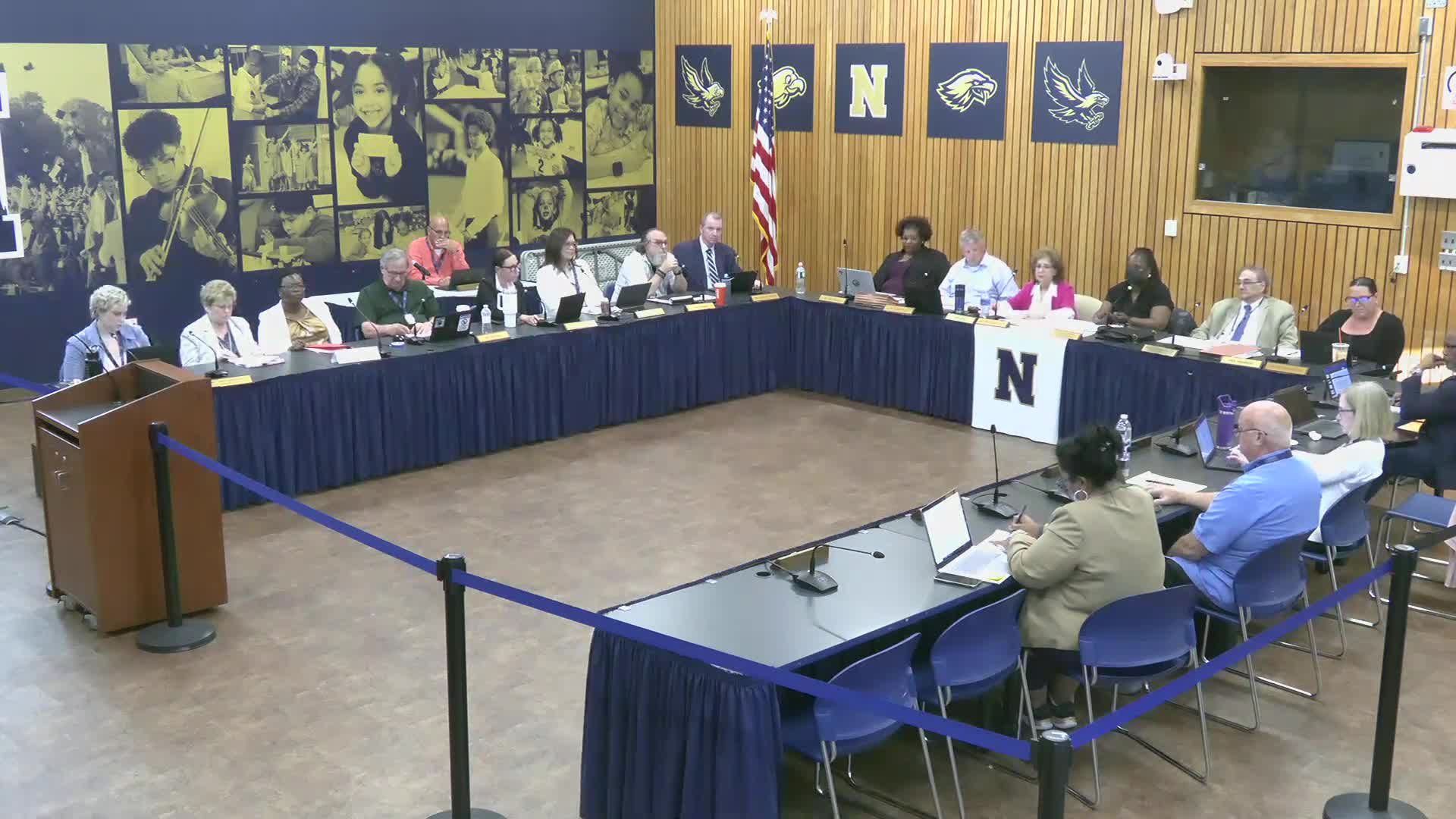Trustee challenges presentation data on district's educator performance and student reading levels
June 10, 2025 | Newburgh City School District, School Districts, New York
This article was created by AI summarizing key points discussed. AI makes mistakes, so for full details and context, please refer to the video of the full meeting. Please report any errors so we can fix them. Report an error »

In a charged atmosphere at the Board of Education's regular meeting on June 10, 2025, tensions flared as trustees engaged in a heated discussion about educational data and its implications for district performance. The meeting, held in New York, showcased the complexities of addressing academic challenges while navigating the dynamics of board governance.
As the clock ticked past 6:30 PM, one trustee passionately defended the importance of data in understanding educational outcomes. "Data is supposed to tell a story," they asserted, emphasizing that it should not be used to undermine the hard work of educators. This sentiment echoed throughout the room, highlighting a shared concern about the narrative surrounding student performance and the role of teachers in the district's challenges.
The trustee raised critical questions about the origins of the data presented, pointing out that effective teaching begins long before students reach high school. "Where are the feeder groups? Where are the cohorts?" they asked, urging their colleagues to consider the entire educational pipeline rather than focusing solely on high school metrics. This call for a broader perspective underscored the complexity of educational reform and the need for a comprehensive approach to student success.
However, the discussion took a contentious turn as interruptions and disagreements surfaced. Another trustee challenged the narrative that previous efforts to improve education were inadequate, stating, "It is not fair to say that we were not addressing this before you were here." This exchange highlighted the underlying tensions within the board, as members grappled with differing views on accountability and progress.
Despite the friction, the meeting also revealed a commitment to improvement. The mention of adding new reading programs, such as Wilson, indicated a willingness to explore solutions to the district's literacy challenges. Yet, the stark reality remained: only 30% of students were reading at grade level, a statistic that loomed large over the discussions.
As the meeting drew to a close, the urgency for collaboration and constructive dialogue became clear. The board's ability to unite in the face of challenges will be crucial as they navigate the path forward for the district's students and educators alike. The discussions from this meeting not only reflect the immediate concerns of the board but also resonate with the broader narrative of educational reform in New York, where the stakes for student success are higher than ever.
As the clock ticked past 6:30 PM, one trustee passionately defended the importance of data in understanding educational outcomes. "Data is supposed to tell a story," they asserted, emphasizing that it should not be used to undermine the hard work of educators. This sentiment echoed throughout the room, highlighting a shared concern about the narrative surrounding student performance and the role of teachers in the district's challenges.
The trustee raised critical questions about the origins of the data presented, pointing out that effective teaching begins long before students reach high school. "Where are the feeder groups? Where are the cohorts?" they asked, urging their colleagues to consider the entire educational pipeline rather than focusing solely on high school metrics. This call for a broader perspective underscored the complexity of educational reform and the need for a comprehensive approach to student success.
However, the discussion took a contentious turn as interruptions and disagreements surfaced. Another trustee challenged the narrative that previous efforts to improve education were inadequate, stating, "It is not fair to say that we were not addressing this before you were here." This exchange highlighted the underlying tensions within the board, as members grappled with differing views on accountability and progress.
Despite the friction, the meeting also revealed a commitment to improvement. The mention of adding new reading programs, such as Wilson, indicated a willingness to explore solutions to the district's literacy challenges. Yet, the stark reality remained: only 30% of students were reading at grade level, a statistic that loomed large over the discussions.
As the meeting drew to a close, the urgency for collaboration and constructive dialogue became clear. The board's ability to unite in the face of challenges will be crucial as they navigate the path forward for the district's students and educators alike. The discussions from this meeting not only reflect the immediate concerns of the board but also resonate with the broader narrative of educational reform in New York, where the stakes for student success are higher than ever.
View full meeting
This article is based on a recent meeting—watch the full video and explore the complete transcript for deeper insights into the discussion.
View full meeting
